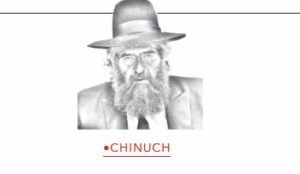Articles
A Day Of Unprecedented Opportunity
February 13, 2021

Rabbi Schmeltzer
Purim is a highlight for most children, young and old. They plan in anticipation for this long-awaited, fleeting, 24-hour period. For parents, however, it may be daunting, and an immense challenge. There are many dos—and even more don’ts.
There is much to be said about what to permit and what to forbid. Common sense dictates being responsible parents. This includes knowing the whereabouts of your children at all times. Of paramount importance is for a parent to be familiar with a child’s companions, and to be aware of their activities and destinations. This is not the time to abdicate parental responsibilities. To ensure a proper and safe day, it is incumbent upon each parent to confidently assert themselves in establishing limits and boundaries, and not to succumb to the societal pressures of permissiveness, hefkerus, and neglect.
Purim is packed with wholesome lessons and themes that should not be bypassed. It is a day of tefillah, when Shamayim is open and available at hand to actualize any bakashah. It is a day of renewing our commitment to adhering to the Torah mei’ahavah.
In the particular kapitel in Tehillim dedicated to Esther and the nes of Purim, Dovid Hamelech states, “Becha batchu avoseinu…” A central theme in the episode of Purim was the tremendous, unshakeable bitachon displayed – the bitachon that eventually brought the salvation. We, too, live in times in which our bitachon has been sorely tested, and we too have held on to the unswerving bitachon coursing through our veins.Itisthis bitachon of herculean proportion that has enabled us to persevere, navigate the travails of life, and face the unfathomable challenges of the past year. The Yom Tov of Purim is a 24-hour opportune time to live bitachon; stressthe efficacy ofitspowers and infuse ourselves and our children with this life-giving elixir.
Perusing the aforementioned kapitel 22 in Tehillim, Esther declares, “Spare me from that dog” and “Save me from the mouth of the lion.” Chazal explain these diverse utterances as follows. As Esther entered the inner chamber of Achashveirosh, the Shechinah escaped her. She cried out, “Keli, Keli, why have you forsaken me? Can it be because I referred to Achashveirosh condescendingly as a dog? If that is the cause, I shall repair my mistake and refer to him as a lion in my tefillah to be saved!”
What exactly would have been the problem with referring to Achashveirosh as a dog? Did he deserve special accolades? Chazal tell us that his desire to annihilate the Yidden was stronger than that of Haman. Chazal is replete with negativity towards him and his reprehensible character!
How could Esther be faulted when, in her desperation to save her entire people, she attributed an appropriately negative adjective to this deplorable person? And how exactly was it repaired by calling him a “lion”?
The Brisker Rav resolves this issue with the following explanation. Imagine a person sauntering down the street who encounters a scary-looking dog. He may very well be taken aback, and somewhat afraid. But he is still quite hopeful that the dog will pass peacefully, with maybe a sniff. The person remains confident that he will be okay. Now, what about one who confronts a lion on his walk? He harbors no hope of avoiding his becoming the lion’s next meal!
When Esther referred to Achashveirosh as a dog, she indicated that she did not perceive him as a major obstacle, and that she would be able to handle the situation without outside intervention. That is when the Shechinah escaped her, as if to remind her, “You think you do not need my help…” It was then that Esther realized that her only hope of salvation was through the Eibershter, and Him alone. That is what she was expressing when she referred to the king as a lion. “I recognize that I am in a situation similar to a confrontation with a lion, and my only hope is in You, Hashem.” At that point, the yeshuah was set into motion; Achashveirosh welcomed her graciously, and the Shechinah escorted her throughout the entire ordeal, until Haman was eliminated and the Yidden were spared.
Internalize the advantage of strengthening our bitachon and recognition that our lives are totally in Hashem’s hands. Emphasize the meaning of kapitel 22.
Thirty days before every Yom Tov, we are instructed to engage in its relevant halachos. Designate bitachon as the sugya with which we should prepare ourselves for the Yom Tov of Purim.
During the few weeks leading up to Purim, take the opportunity on a daily basis to highlight bitachon moments. Perhaps set aside five minutes daily to read from a bitachon sefer weekly, or from sefarim dedicated to this subject. Contemplate the recent loss of gedolei olam, and how their bitachon and emunah featured prominently throughout their remarkable lives. Possibly making daily entries of bitachon opportunities into a family journal/diary will help foster genuine bitachon in a life-altering fashion.
The Mashgiach Rav Chazkel Levenstein zt”l presented a gift-wrapped notebook to his daughter Rebbetzin Ginsberg, instructing her to record any episode involving bitachon. She did not imagine that she would ever complete the notebook. Instead, she said, it proved to be one of the greatest gifts she ever received, as many more notebooks were eventually filled with myriad installments of chizuk in emunah. This decades-long exercise filled her with tremendous strength in emunah and bitachon and held her hand throughout her travails in life.
Emulating this may very well change our individual lives as well as the trajectory of our entire future, b’ezras Hashem.